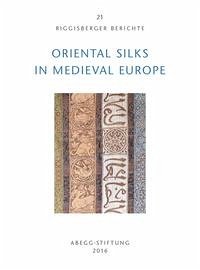During the Middle Ages, woven silks were highly esteemed in Western Europe as the material par excellence to ennoble people, objects, places, sacred spaces, and symbolic acts. Silken fabrics were ubiquitous in the cultural practices of European elites since early times, but until the early fourteenth century they had to be imported from Byzantium, Islamic Egypt, Islamic Spain, the Mediterranean, and Eastern or Central Asia. This book focuses on textile artefacts made of such imported silks and preserved in different places throughout Europe. While a taste for silks from Asia with radiant colors and exotic designs was a Europe-wide phenomenon, the range of case studies makes clear that the process of adaptation was individually variable and differed from place to place and from one social group to another. The resulting picture gives us a deeper understanding of the meaning of patterned silks as a material in Premodern European society.
Bitte wählen Sie Ihr Anliegen aus.
Rechnungen
Retourenschein anfordern
Bestellstatus
Storno

